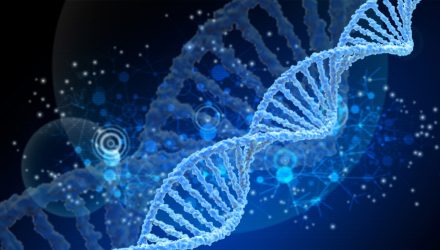From an investment perspective, adequately tapping rapidly emerging healthcare evolution requires flexibility. Among exchange traded funds, the ARK Genomic Revolution Multi-Sector Fund (CBOE: ARKG) answers that call.
ARKG features robust exposure to an array of many new healthcare frontiers, including long-read sequencing (LRS). Also known as third-generation sequencing, LRS technology helps clinicians sequence individual DNA molecules in real time, reducing costs and margin for error.
LRS is still an emerging field, but its potential range of applications is immense. One such potential application is breast cancer testing, and there’s also a budding case for LRS technology in prenatal testing.
“A recent publication by Dennis Lo et al. demonstrates that long-read sequencing (LRS) could have clinical utility in the non-invasive prenatal testing (NIPT) market. Currently dominated by short-read sequencing (SRS), NIPT is one of the largest and most rapidly expanding clinical sequencing markets,” according to ARK Investment Management research.
As an actively managed exchange traded fund, ARKG can be more responsive to companies making LRS progress than rival index-based products. It already is, as highlighted by a 5.12% allocation to Pacific Biosciences of California (NASDAQ:PACB). That’s ARKG’s third-largest holding.
“Undercutting the status quo, however, Lo et al.’s use of Pacific Biosciences (PACB, “PacBio”) HiFi sequencing enabled them to discover that long cfDNA (>1k bps) exists at a median percentage of 10.9%, 12.9%, and 22% in the first, second, and third trimesters of pregnancy, respectively. Importantly, the finding suggests that long cfDNA fragments could contain novel, clinically relevant information, a discovery that we believe will expand the NIPT market,” adds ARK.
Bolstering the case for LRS exposure, as ARK points out, is the fact that the study’s authors note this technology can discern whether significant cfDNA fragments came from maternal or fetal tissue, potentially expanding its use case.
Clinicians, patients, and investors should want to see this technology advance because the implications for all of those groups are undoubtedly positive.
“The ability to differentiate maternal from fetal tissue-of-origin (TOO) for cfDNA molecules should open new markets in the NIPT space. Identifying maternal and fetal inheritance patterns, future LRS-based NIPT approaches could simplify the detection of both de novo mutations and recessively inherited monogenic disorders. Lo et al. also demonstrate that LRS could be used to detect pregnancy complications like preeclampsia,” concludes ARK.
Aside from LRS advancements, ARKG could be an idea to consider in 2022 because, in an unusual turn of events, some disruptive growth segments, of which genomics is one, appear to be offering value to investors.
For more news, information, and strategy, visit the Disruptive Technology Channel.
The opinions and forecasts expressed herein are solely those of Tom Lydon, and may not actually come to pass. Information on this site should not be used or construed as an offer to sell, a solicitation of an offer to buy, or a recommendation for any product.

